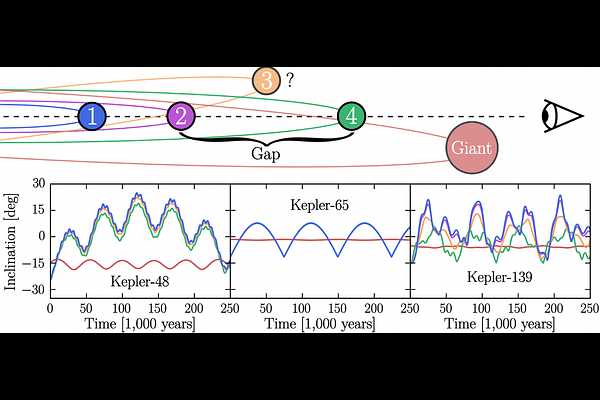The Gap-Giant Association: Are Planets Hiding in the Gaps?

The Gap-Giant Association: Are Planets Hiding in the Gaps?
Caleb Lammers, Joshua N. Winn
AbstractA handful of stars are known to host both an inner system of multiple transiting planets and an outer giant planet. These systems all feature a prominent gap between the orbits of two of the transiting planets, distinguishing them from typical multiplanet systems with more uniform orbital spacings. The reason for the association between inner gaps and outer giants is unknown. In this paper, we assess whether undiscovered planets might occupy these gaps in systems with outer giants. For each of the four relevant systems - Kepler-48, Kepler-65, Kepler-90, and Kepler-139 - we found that a $\sim 2 - 20 M_\oplus$ planet could reside in the gap without inducing dynamical instability. However, in each case, the gravitational influence of the outer giant planet is insufficient to tilt the orbit of the hypothetical planet by enough to prevent transits, ruling out a proposed theory for the observed gap-giant association. The gaps might instead contain smaller, undetectable planets ($ \lesssim 0.5 - 1\,R_\oplus$), or be entirely devoid of planets.